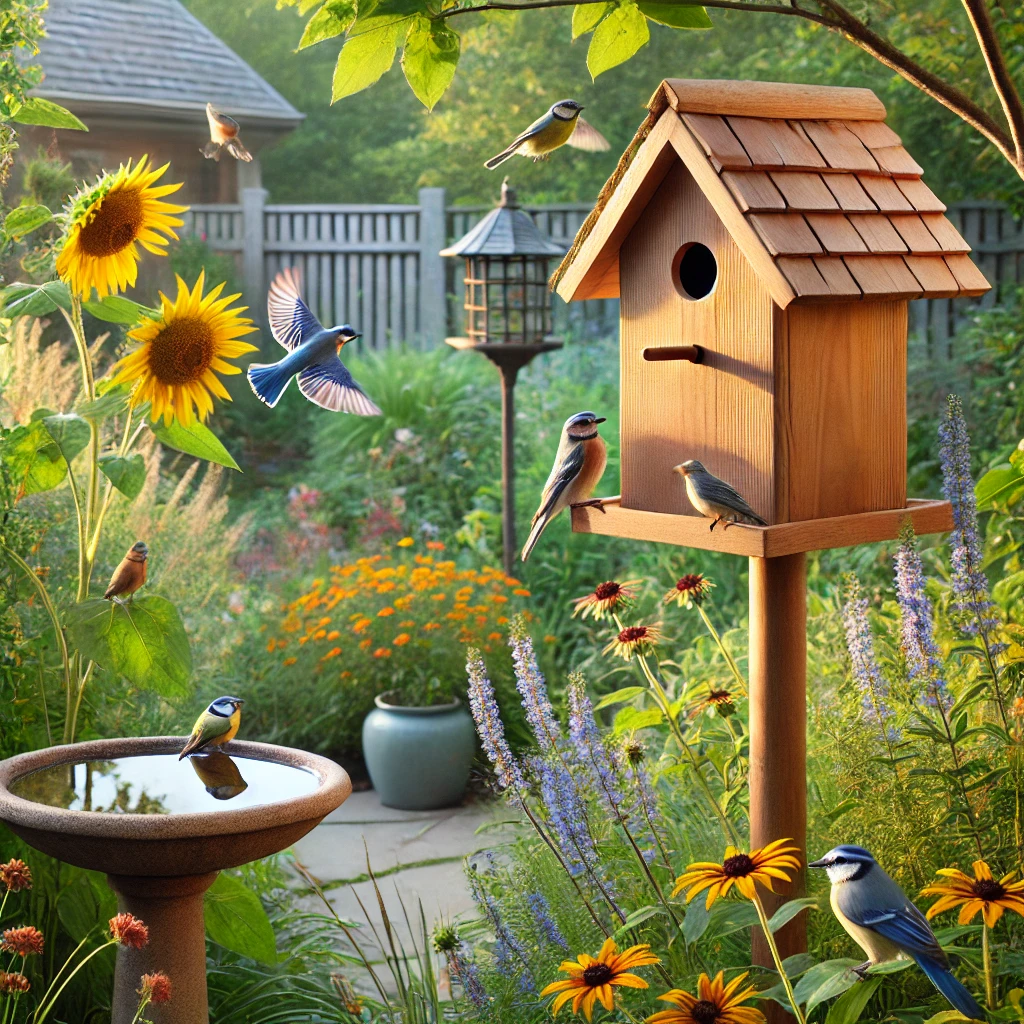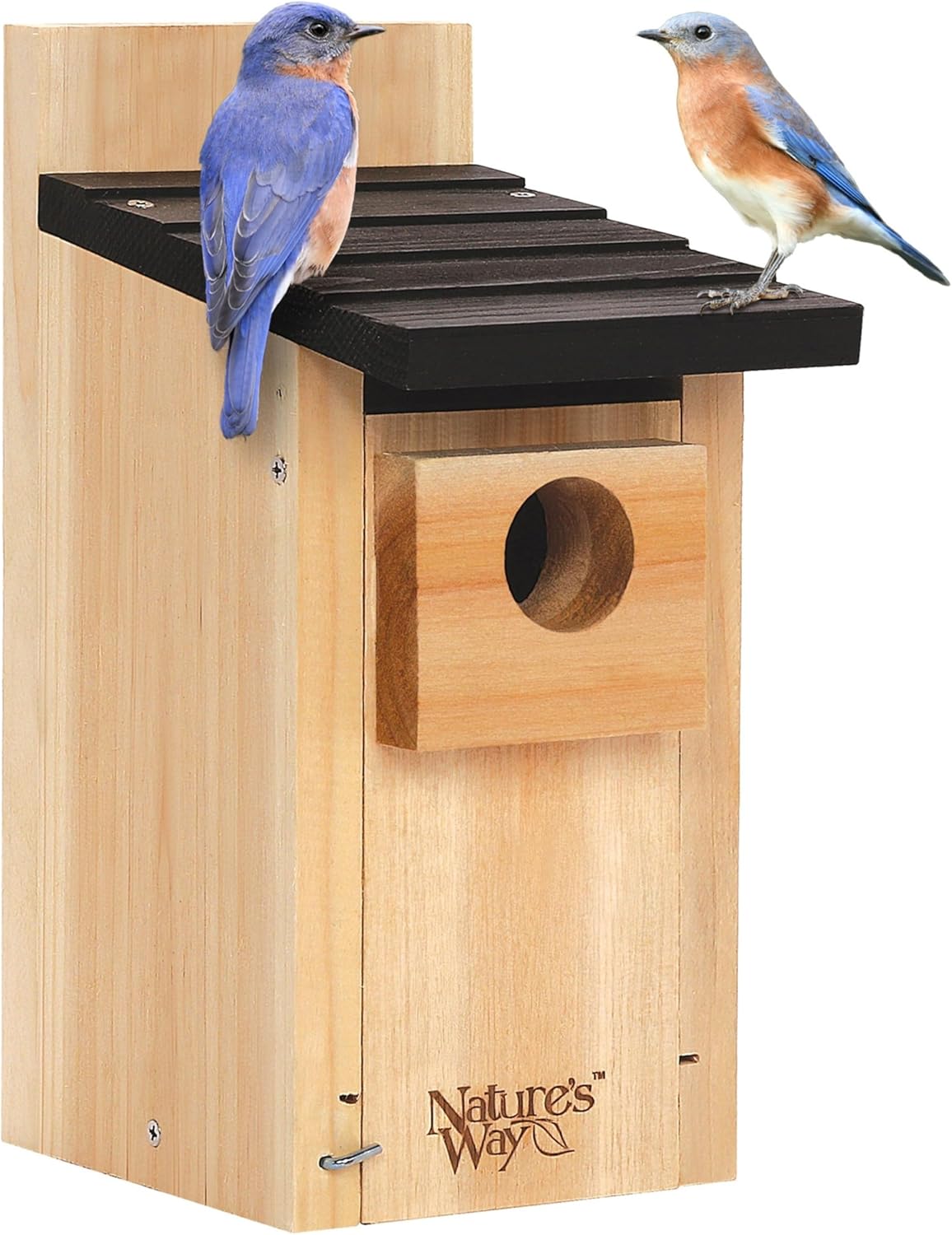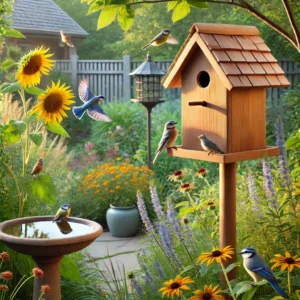The Definitive Guide: How to Get Birds to Nest in Your Birdhouse

I’ll never forget the first time it happened. After two seasons of staring at an empty, silent birdhouse, I walked out one April morning to see a flurry of activity. A male bluebird was perched on top, proudly guarding, while the female zipped back and forth with bits of dry grass. They had chosen my box! That feeling of success—of having created a safe, desirable home for a wild creature—is what this guide is all about.
Attracting nesting birds is far more than just buying a cute box and nailing it to a tree. It’s an intentional process of seeing the world from a bird’s perspective. They aren’t looking for charm; they’re looking for a fortress that will protect their next generation. For years, I made the common mistakes: wrong placement, wrong house style, and—most critically—a complete lack of predator protection. This guide is the culmination of everything I’ve learned through trial, error, and extensive research to help you bypass the frustration and get straight to the joy.
Quick Success Checklist: The Essentials
- Be Species-Specific: Choose a house built for the birds you want to attract (correct hole size is key).
- Location is Everything: Place the house in the right habitat (open vs. wooded) and at the right height.
- Face it East: Orient the entrance hole towards the east to avoid hot afternoon sun and prevailing winds.
- Prioritize Safety Above All: Mount your birdhouse on a pole with a predator baffle. This is non-negotiable.
- Keep it Natural: Use birdhouses made of untreated wood and never add a perch.
- Cleanliness Counts: Clean out the house after each nesting season.
- Be Patient: It can sometimes take a season or two for birds to discover and trust a new house.
Step 1: Think Like a Bird – Understanding Their Needs
Before you even buy a birdhouse, you need a paradigm shift. You’re not just decorating your garden; you’re entering the avian real estate market. And in this market, the currency is survival. Birds are making a life-or-death decision when they choose a nest site. A good choice means a successful brood. A bad choice means losing their eggs or young to a predator, parasite, or the elements.
The Three Pillars of a Perfect Nesting Site:
- Safety from Predators: This is priority number one. Can a raccoon, snake, or cat reach this box? If so, it’s a non-starter.
- Shelter from Elements: The box must stay dry during a storm and cool during a heatwave.
- Proximity to Resources: Is there a reliable source of food (insects, seeds) and water nearby?
Birds begin their search in earnest in the spring, a process governed by daylight and hormones. This timing is deeply ingrained in their biology, following a rhythm much like a bird’s 24-hour clock, which dictates their daily and seasonal activities. Your job is to have the perfect “For Rent” sign up when they come looking.
Step 2: Location, Location, Location – Where You Place It Matters Most
You can have the world’s best birdhouse, but if it’s in the wrong spot, it will remain empty. Siting is an art and a science, guided by the specific preferences of the birds you want to attract.
The Ideal Habitat
Different birds live in different neighborhoods. You wouldn’t look for a beachfront condo in the mountains. Likewise, don’t place a bluebird house in a dense forest.
- Open Lawns & Fields: Eastern Bluebirds, Tree Swallows, and Purple Martins need wide-open spaces to hunt for insects on the wing. Their houses should be placed in the middle of a lawn or field, far from dense trees.
- Woodland Edges & Backyards: Chickadees, Titmice, and House Wrens prefer the security of nearby trees and shrubs. Place their houses along the edge of a wooded area or near a thicket in your backyard.
Mounting Height & Direction
Getting the height right makes birds feel secure. The direction protects them from the weather. The general rule is to **face the entrance hole east**, which provides gentle morning sun while shielding the box from the harsh afternoon sun and prevailing westerly winds.
| Bird Species | Ideal Mounting Height | Habitat Notes |
|---|---|---|
| Eastern Bluebird | 5 – 8 feet | Open fields, large lawns, facing a perch. |
| House Wren | 5 – 10 feet | Near shrubs or brush piles. They are curious! |
| Chickadee / Titmouse | 6 – 15 feet | Wooded backyards, often on the edge of a clearing. |
| Tree Swallow | 5 – 10 feet | Open fields, always near a pond, lake, or marsh. |
| Downy Woodpecker | 8 – 20 feet | Wooded areas, requires wood shavings inside. |
Step 3: Choose the Right Real Estate – Not All Birdhouses Are Created Equal
The design of the birdhouse itself is a critical filter. A well-designed house invites the right tenants and discourages the wrong ones (like invasive House Sparrows).
Key Features of a High-Quality Birdhouse:
- Untreated Wood: Cedar, pine, or cypress are excellent choices. Avoid plastic or metal, which can overheat. Never use a house made from pressure-treated wood, as the chemicals are toxic.
- No Perch: This is a major red flag! Native cavity-nesting birds don’t need a perch. It only serves as a handle for predators to grab onto.
- Proper Ventilation & Drainage: Look for small gaps at the top of the walls for air circulation and holes in the floor to let moisture out.
- Appropriate Entrance Hole Size: This is crucial for attracting specific birds and excluding others.
- Easy to Clean: A side panel or roof that opens makes the essential annual clean-out much easier.
While most people think of wooden boxes, some birds, like Purple Martins, readily nest in natural gourds. You can learn more about these fascinating options in our guide to the best birdhouse gourds. For a broader look at different styles, our birdhouse reviews can offer more guidance.
Product Pick: The Expert-Approved Birdhouse

Nature’s Way Cedar Bluebird Box House
This birdhouse is a perfect example of getting everything right. It’s constructed from rot-resistant cedar, features an appropriately sized 1.5-inch hole for bluebirds, and includes critical design elements like ventilation slots, drainage holes, and an easy-open side panel for cleaning. Most importantly, it has no perch and includes a raised mesh floor to keep nestlings dry. It’s a design that shows a deep understanding of what birds actually need.
Check Price on AmazonStep 4: Predator-Proofing – Your Most Important Job as a Bird Landlord
“Putting up a birdhouse without a predator guard is like leaving your baby on the front porch and hoping for the best. It’s irresponsible.” – A quote from my mentor that has stuck with me for years.
This is the step where most people fail, and it has heartbreaking consequences. A bird family in an unprotected box is a sitting duck for raccoons, snakes, and cats. The two essential tools for security are a **pole and a baffle**.
Mounting on a Pole: Never mount a birdhouse on a tree, fence, or the side of your house. These are easy highways for climbing predators. A smooth metal pole is the first line of defense.
Installing a Baffle: A baffle is a dome- or cylinder-shaped barrier that fits on the pole below the birdhouse. It creates a physical block that raccoons and snakes cannot get around. It is the single most effective tool for protecting a nest.
Additionally, protecting the entrance hole itself is vital. House Sparrows and woodpeckers can enlarge holes, compromising the nest. Consider installing one of the best birdhouse entry protectors to keep the dimensions secure.
Product Picks: The Complete Predator Defense System

Rinlain Pole and Baffle Combo
This kit takes the guesswork out of proper mounting. It includes a multi-section steel pole that is easy to assemble and a wrap-around squirrel baffle that is also highly effective against raccoons. The pole is the correct diameter to support most birdhouses, and the baffle can be adjusted to the perfect height (about 4 feet off the ground) to stop climbers in their tracks. Investing in a system like this is the most important decision you’ll make.
Check Price on AmazonStep 5: Create an Irresistible Landscape
A great house in a great neighborhood is the winning combination. You can make your yard more attractive by providing the resources birds need to raise a family.
- Food and Water: A birdbath provides essential drinking and bathing water. Nearby feeders can supplement their diet, especially during tough times. Just be sure to keep feeders at least 15-20 feet away from the birdhouse to avoid attracting predators to the nesting area. See our guide to the best bird seed for tips on what to offer.
- Native Plants: Planting native flowers, shrubs, and trees is the best way to support birds. They provide cover from predators and, most importantly, attract the insects that 96% of terrestrial birds feed their young.
- Nesting Materials: While you shouldn’t put anything *inside* the house, you can offer materials nearby. A small pile of twigs, a patch of mud, or a suet cage filled with natural cotton (cut into 1-inch pieces) can be a huge help.
Step 6: Be a Good Landlord – Maintenance and Timing
Your work isn’t done once the house is up. Good maintenance ensures the house remains a healthy and desirable location year after year.
When to Install: The best time to put up a new birdhouse is in the fall or winter. This gives birds plenty of time to find it during their winter wanderings and allows the human scent to fade before nesting season begins.
Annual Clean-Out: After the last brood has fledged in late summer or fall, you must clean out the old nest. Old nests can harbor parasites and bacteria that can harm the next year’s clutch. Wear gloves, remove all material, and scrub the interior with a solution of one part bleach to nine parts water. Rinse thoroughly and let it air dry completely.
A clean house also provides a safe place for birds to shelter during harsh winter weather. If you’ve ever wondered, do birds sleep in the same place every night?, a clean birdhouse often provides a reliable answer: yes, if it’s safe and available.
Frequently Asked Questions (FAQ)
Why is my new birdhouse still empty after a year?
Patience is key, but if it’s been a full season, run through the checklist. Is it in the right habitat? Is it at the right height? Is it mounted on a pole with a baffle? 9 times out of 10, the problem is related to location or a perceived lack of safety.
A House Sparrow is trying to take over my bluebird house. What can I do?
House Sparrows are an invasive species and a serious threat. The best defense is to only use houses without perches and with the correct hole size. If they persist, you must remove their nesting material repeatedly. Do not allow them to nest successfully.
Should I paint or decorate my birdhouse?
No. Use untreated wood and let it weather naturally. Bright paints can attract predators, and dark paints can cause the house to overheat. Natural is always better and safer for the birds.
Can I have more than one birdhouse in my yard?
Yes, but you must respect their territorial needs. For the same species (e.g., two bluebird houses), they need to be at least 100 yards apart. For different species with different needs (e.g., a wren and a chickadee), you can place them much closer, perhaps 40-50 feet apart.
Your Journey to Becoming a Bird Landlord
Inviting birds to nest in your yard is one of the most intimate connections we can forge with the natural world. It requires more than hope; it requires knowledge, empathy, and a commitment to their safety. By following these steps—by choosing the right house, placing it with care, and defending it fiercely—you’re not just putting up a box. You’re creating an opportunity for life to flourish. And the reward of seeing that first fledgling take flight from a home you provided is absolutely magical.
This article serves as a deep dive, but for a condensed version of these tips, you can always refer to our main guide on how to get birds to nest in your birdhouse.

